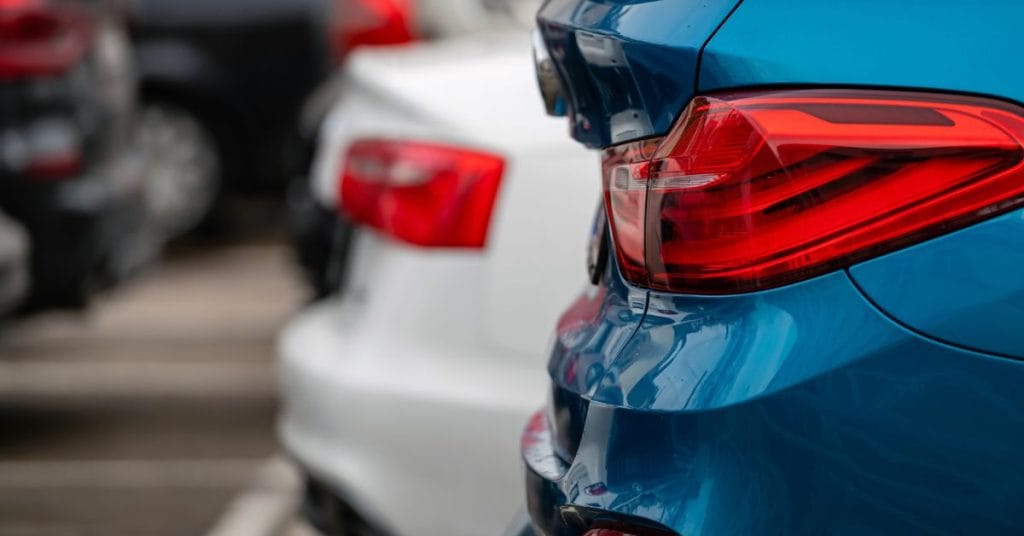Denmark is famous for its bicycles and efficient public transportation, yet many foreigners discover that having access to a car can make life significantly easier—especially for families, people living outside major cities like Copenhagen or Aarhus, or those who have long commute times to and from work. This is why we have written a complete guide on cars in Denmark for foreigners.
However, Denmark is also one of the most expensive countries in Europe when it comes to car ownership. Cars are subject to a hefty registration tax, fuel prices are high, and parking in larger cities can be a challenge. On the positive side, Denmark has well-maintained roads, safe driving conditions, and a rapidly growing infrastructure for electric vehicles, making driving a convenient and reliable option if you can manage the costs.
Whether you’re planning to buy, lease, or simply use a car occasionally, understanding the Danish system will save you time, money, and frustration. And in this guide, we write everything you need to know about cars in Denmark.
Here are the key points in this article:
- High Costs of Cars in Denmark: Car ownership in Denmark involves significant expenses such as registration tax, insurance, fuel, and parking, making it one of the most expensive countries in Europe for drivers.
- Leasing vs. Buying a Car in Denmark: Foreigners must weigh the advantages of leasing, which offers lower upfront costs and flexibility, against buying, which provides ownership but involves high taxes and costs.
- Sustainable Mobility and Electric Vehicles: Denmark promotes electric vehicle adoption through tax benefits, extensive charging infrastructure, and government plans to phase out petrol and diesel cars by 2035.
- Driving Licenses and Driving Schools for Foreigners: EU/EEA licenses are valid in Denmark, while non-EU licenses may require exchange or testing after 90 days; structured driving courses are available for new drivers.
- Car Ownership Trends and Future Outlook in Denmark: With high taxes and growing EV adoption, Denmark sees increasing leasing popularity and aims to reduce car dependency through investments in public transport and EV infrastructure.
If you are looking for more in-depth guides on specific matters related to cars in Denmark, you may want to read our other guides, in which we dive deeper into these areas:
- Best Car dealers in Denmark for foreigners
- Best Car leasing in Denmark for foreigners
- Best Car insurance in Denmark for foreigners
- Best Driving schools in Denmark for foreigners
First Things First: Leasing or Buying Cars in Denmark?
When looking into the topic of cars in Denmark, foreigners often face the question of whether they should buy a car or lease one. Both options are common in Denmark, but they come with different advantages and drawbacks which are good to know on beforehand.
Buying a Car:
Purchasing a car in Denmark means paying a significant registration tax (up to 150% of the car’s value), on top of the purchase price. This makes new cars especially expensive, so many Danes and expats choose used cars instead. The benefit of buying is ownership—you can sell it later and you’re not locked into a contract.
Leasing a Car:
Car leasing has become increasingly popular, especially among expats who plan to stay in Denmark for a limited number of years. Leasing usually involves a lower upfront cost, predictable monthly payments, and the option to return the car after a set period. However, you don’t own the car, mileage limits often apply, and repairs may not always be included.
For those considering these options, we’ve created dedicated guides highlighting the best car dealers in Denmark for foreigners and best leasing companies in Denmark for foreigners, where you can compare practical offers and get tailored advice to make the best decision on cars in Denmark.
Car Ownership Costs in Denmark
Owning a car in Denmark can feel like a luxury, as the country is known for some of the highest car-related costs in Europe. The main factors driving up the price include taxes, insurance, and fuel. To give you an overview, here’s a breakdown of the most common expenses:
| Expense | Estimated Cost (DKK) | Notes |
|---|---|---|
| Car registration tax | Up to 150% of car value | Applies to most new cars; used cars are cheaper since tax is already paid |
| Annual green tax | 600 – 7,000 / year | Based on car’s fuel efficiency and CO₂ emissions |
| Car insurance | 4,000 – 10,000 / year | Liability insurance is mandatory; comprehensive coverage is optional but recommended |
| Fuel | 13 – 16 DKK / liter | Denmark has some of the highest fuel prices in the EU |
| Maintenance & repairs | 3,000 – 6,000 / year | Varies depending on car model, age, and usage |
| Parking | 500 – 1,500 / month (cities) | Prices vary widely; parking is particularly costly in Copenhagen and Aarhus |
| Tolls & bridges | 250 – 400 DKK (one-way) | E.g., Great Belt Bridge between Zealand and Funen |
Tip for foreigners here for a limited time: If you are staying in Denmark for a short time like one to two years, leasing might be more economical since you avoid the registration tax and unpredictable resale value.
Driving Licenses and Driving Schools

If you’re moving to Denmark, your ability to use your foreign driver’s license depends on where it was issued:
- EU/EEA licenses: Valid in Denmark without exchange.
- Non-EU licenses (e.g., USA, Turkey, India): Often valid for up to 90 days after moving. After that, you may need to exchange it or take a Danish driving test (theory + practical).
The exchange rules vary depending on your country of origin. For some countries, a simple exchange is possible, while for others, you’ll need to undergo partial or full training.
Driving Schools in Denmark
If you need to take driving lessons, Denmark requires a structured approach that includes:
- A theory course (usually in Danish, though some schools offer English lessons).
- Practical lessons on the road.
- Mandatory first-aid course.
- A final driving test with a certified examiner.
Prices for a driving license can be quite high compared to other countries, typically ranging between 12,000 and 18,000 DKK, depending on how many lessons you need.
To make the process easier, we’ve created a dedicated subpage on the best driving schools in Denmark for foreigners, highlighting schools with English-language instruction and flexible schedules.
Car Insurance in Denmark for Foreigners

In Denmark, car insurance is mandatory for all car owners. At a minimum, you must have liability insurance (ansvarsforsikring), which covers damages or injuries caused to others. Many foreigners also choose to add comprehensive coverage (kaskoforsikring) for extra protection.
Types of Car Insurance
- Liability insurance (mandatory): Covers personal injury and property damage caused to others.
- Comprehensive insurance (optional): Covers damage to your own vehicle, theft, vandalism, and accidents (recommended for newer cars).
- Partial coverage (optional): A cheaper version that may cover theft and fire but not all accidents.
Average Insurance Costs
Insurance premiums depend on your age, driving history, type of car, and whether you live in a city or rural area. On average:
- 4,000 – 6,000 DKK/year for liability only.
- 6,000 – 10,000 DKK/year for liability + comprehensive.
Tip for foreigners: If you have a clean driving record abroad, ask your insurance provider in your home country for documentation. Some Danish insurers will consider it, which may reduce your premium.
If you would like to read more on car insurances in Denmark, we have an entire guide comparing providers that offer English support and fair pricing.
Electric Vehicles (EVs) and Sustainability
Denmark is strongly focused on sustainable mobility, and electric cars are increasingly popular due to government incentives and growing charging infrastructure.
Why EVs are Popular in Denmark
- Tax benefits: EVs are exempt from some of the high registration taxes applied to petrol/diesel cars.
- Lower running costs: Charging is cheaper than filling up with fuel.
- Environmental focus: Many Danes prefer EVs as part of a greener lifestyle.
- Government goal: Denmark aims to end sales of new petrol and diesel cars by 2035.
Practical Considerations for EV Owners
- Charging infrastructure: Public charging points are widespread in cities and expanding in smaller towns.
- Home charging: If you live in an apartment, check with your housing association or landlord about options.
- Costs: While EVs have higher upfront prices, monthly running costs are generally lower due to cheaper electricity and reduced maintenance needs.
Tip: Many leasing companies in Denmark offer attractive packages for electric vehicles, which can be a cost-effective way for foreigners to drive an EV without long-term commitment. If you already have an EV and you are simply just looking for good charging options for your home, we recommend you use Evify DK, which is one of the leading providers of home charging stations in the Nordic countries.

Evify DK is one of the leading providers of home charging stations in the Nordics, with more than 10,000 installations for villa owners. Their vision is to make life easier for electric car owners by eliminating the hassle of calling around and comparing offers from different electricians.
What the Numbers Say About Cars in Denmark
Understanding the broader picture of car use in Denmark can help foreigners make informed decisions. Research shows that Denmark has one of the highest car ownership costs in Europe, largely due to taxes and fuel prices, but also one of the most sustainable transport strategies.
- Car ownership: About 2.8 million cars are registered in Denmark (2024), with ownership steadily increasing.
- EV adoption: Nearly 1 in 5 new cars sold in Denmark is electric or hybrid (2024).
- Leasing popularity: Around 30% of new cars are acquired through leasing, a preferred option for foreigners and young professionals (2024).
- Average lifespan of cars: The average Danish car is kept for 8–10 years (2024).
- Urban vs rural differences: Car ownership is lower in cities like Copenhagen, where biking and public transport dominate (2024).
- Studies (2024) suggest that high car taxes push many Danes to choose smaller or more sustainable cars.
- Foreigners often lean toward leasing rather than owning, as it avoids the steep registration tax and provides flexibility.
- The Danish government continues to invest in EV infrastructure and public transport, aiming to reduce overall car dependency by 2030.
FAQ About Cars in Denmark for Foreigners
Do I need a Danish driver’s license to drive in Denmark?
If you are from an EU/EEA country, your license is valid in Denmark. Non-EU foreigners may need to exchange their license after 90 days, depending on their country of origin.
Is it better to buy or lease a car as a foreigner?
For short-term stays, leasing is usually cheaper and more practical. Long-term residents may benefit from buying, but taxes and upfront costs are high.
Can I insure my car if I’m not a permanent resident?
Yes, but it may be more expensive. Some insurers require a Danish CPR number, so newcomers often find international-friendly providers through specialized brokers.
Are electric cars practical for foreigners in Denmark?
Yes — especially in cities with widespread charging options. Leasing an EV is often the easiest option for newcomers.
How much does it cost to own a car per month in Denmark?
Including insurance, fuel, maintenance, and depreciation, expect 3,000–5,000 DKK per month, depending on the type of car.




